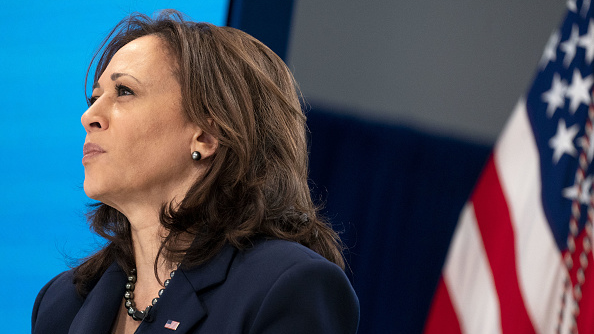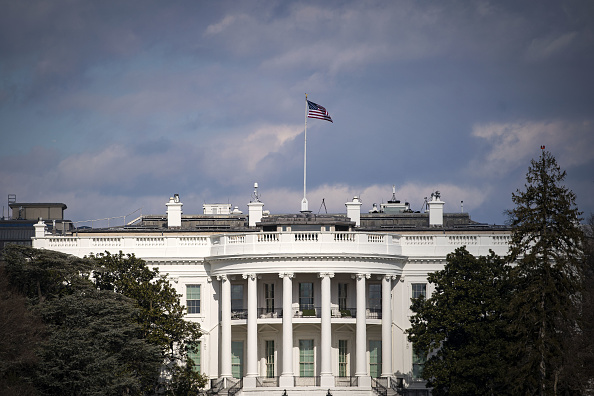
U.S. Vice President Kamala Harris. /Getty
U.S. Vice President Kamala Harris. /Getty
Editor's note: Bradley Blankenship is a Prague-based American journalist, political analyst and freelance reporter. The article reflects the author's opinions and not necessarily the views of CGTN.
U.S. Vice President Kamala Harris on August 24 delivered her sharpest comments about China yet in a speech in Singapore designed to showcase the current administration's full pivot to East Asia.
Calling the region "critically important to our nation's security and prosperity," the U.S. appears to be fully shifting gears toward maintaining its global hegemony by trying to contain Russia, and China, as it completes its wind-down of military adventurism in the Middle East seen with its recent (and controversial) withdrawal from Afghanistan, which is sometimes considered part of that region.
This marks a landmark geopolitical shift, because it has brought full circle the so-called global "war on terror," which Afghanistan was a part of, that was sparked by the 9/11 terrorist attacks and ushered in the beginning of a new core U.S. strategic focus, namely the U.S. pivot to East Asia. This policy had begun several years ago, but we are now entering its apex.
This East Asia policy is part of Washington's main focus in countering the integration of Eurasia.
Washington's dilemma today is the fundamental issue of geopolitics, going all the way back to its foundation. As Sir Halford John Mackinder had argued in 1904 when presenting his landmark paper "The Geographical Pivot of History," the British Empire's focus at that time on naval power – the cudgel of its global hegemony – would be rendered meaningless with sufficient development of land transport that could integrate Eurasia, what he called the "World-Island."
The obvious historical parallel here is the U.S., its reliance on naval power and its military supremacy over the periphery of the Eurasian landmass compared to China and its Belt and Road Initiative (BRI) that seeks to build infrastructure to integrate Eurasia and the world.
Countering the integration of this "World-Island" must be done in a way that could keep the U.S. from spreading itself too thin – mainly by avoiding a two-front conflict with Russia and China, two major powers in the core of Eurasia, since Washington no longer has the capability to win such a conflict.

An American flag flies over the White House in Washington, D.C., U.S., January 22, 2021. /Getty
An American flag flies over the White House in Washington, D.C., U.S., January 22, 2021. /Getty
In managing this situation, Washington faces a unique and unprecedented set of challenges as was pointed out in a recent feature for The National Interest by A. Wess Mitchell, a former Assistant Secretary of State for European and Eurasian Affairs.
He said, "Rather than trying to contain Russia and China simultaneously, the United States needs to find a way to stagger its contests with these two powers to ensure that it does not face both at the same time in a war," which he says could theoretically be achieved in three ways: detente with Russia, deferring competition with China or co-opting both through win-win policies on common forums.
The problem, he notes, is that none of the historical examples to draw from in any of these options align perfectly with the current situation faced by Washington's imperial planners.
Instead, he advocates for essentially a version of the first option aimed at corralling Russia out of an unwinnable two-front war by "giving Russia incentives to be less of a European power – and more of an Asian one." This, he believes, could be achieved by playing on perceived fears of Russian over-dependence and potential subordination to China.
While indeed this could be a point for U.S. diplomacy to play on, it remains to be seen if this fear is actually as much of a motivating factor as people like Mitchell believe – plus whether or not the Russian leadership believes that emboldening U.S. global hegemony in any way is actually desirable or necessary, which I suspect is not the case. (Mitchell's analysis also leaves out the potential for a third front with a major Middle East regional power, Iran, as tensions between Washington and Tehran flare).
With regards to what was included in Mitchell's piece, it does appear to some extent that the administration of President Joe Biden is pursuing this plan which was seen in the summit between Biden and Russian President Vladimir Putin.
We saw in that summit what could be openings for mutual points of interest, such as cybersecurity and arms control. But these are, to put it bluntly, no-brainer points of mutual interest that will probably not lead to any significant realignment – at least not in any time that would fit Washington's window of opportunity.
On the other hand, the U.S. withdrawal from Afghanistan itself provides Russia and China a serious opportunity to cooperate on maintaining security and stability in that country and the Central Asian region altogether, as well as furthering the integration of Eurasia.
(If you want to contribute and have specific expertise, please contact us at opinions@cgtn.com.)

